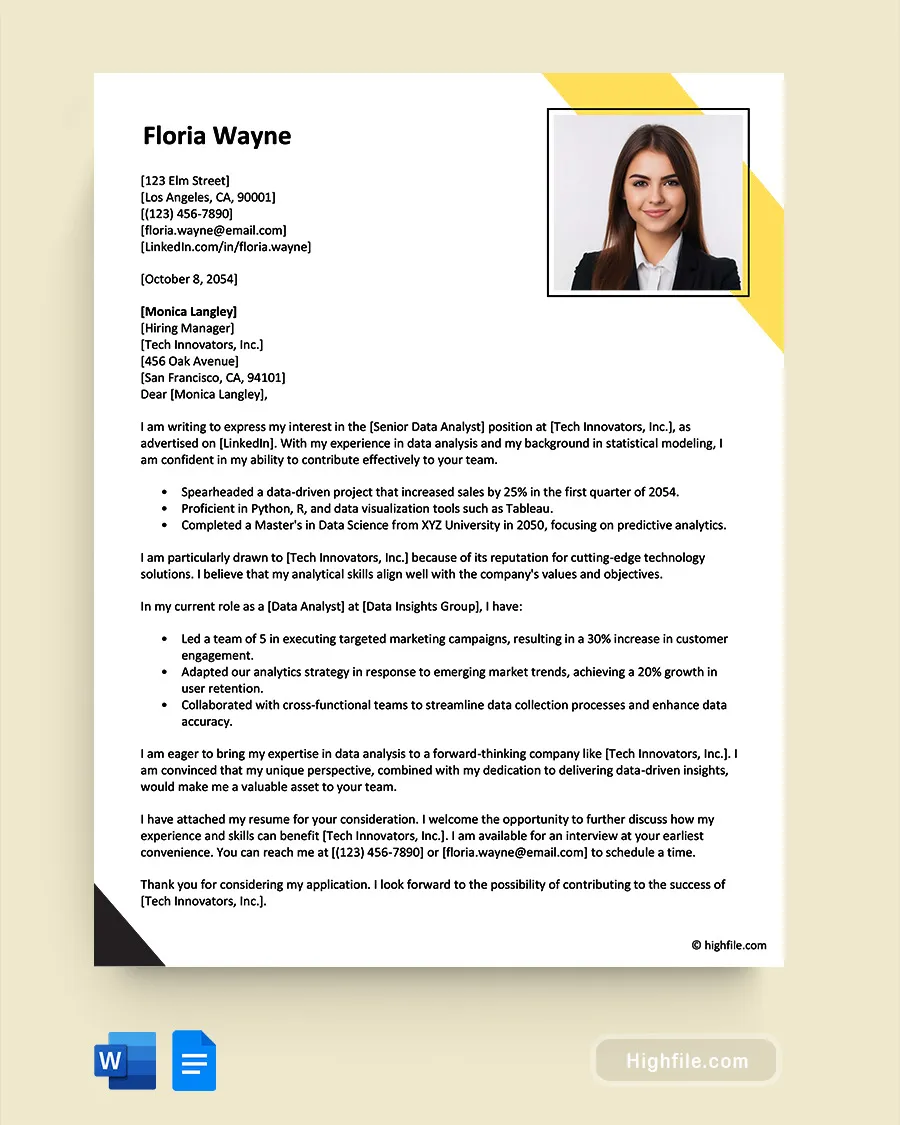What is a Cover Letter Outline
A cover letter outline is a structured framework that guides you in creating a compelling cover letter. It serves as a roadmap, ensuring you include all essential information and present it in a logical and persuasive manner. Using an outline helps you organize your thoughts, highlight relevant skills and experiences, and tailor your letter to each specific job application. By following a well-defined structure, you can create a cover letter that effectively communicates your qualifications and increases your chances of landing an interview.
Why is a Cover Letter Outline Important
The importance of a cover letter outline cannot be overstated. It provides clarity and focus to your writing process. Without a clear structure, your cover letter might appear disorganized and lack impact. An outline helps you stay on track, ensuring you address all key aspects of your qualifications and demonstrate how you meet the employer’s requirements. It saves time by preventing you from rambling or omitting crucial details. Moreover, a well-structured outline allows you to easily adapt your letter to different job applications, making it a versatile tool in your job-seeking arsenal.
Key Components of a Cover Letter
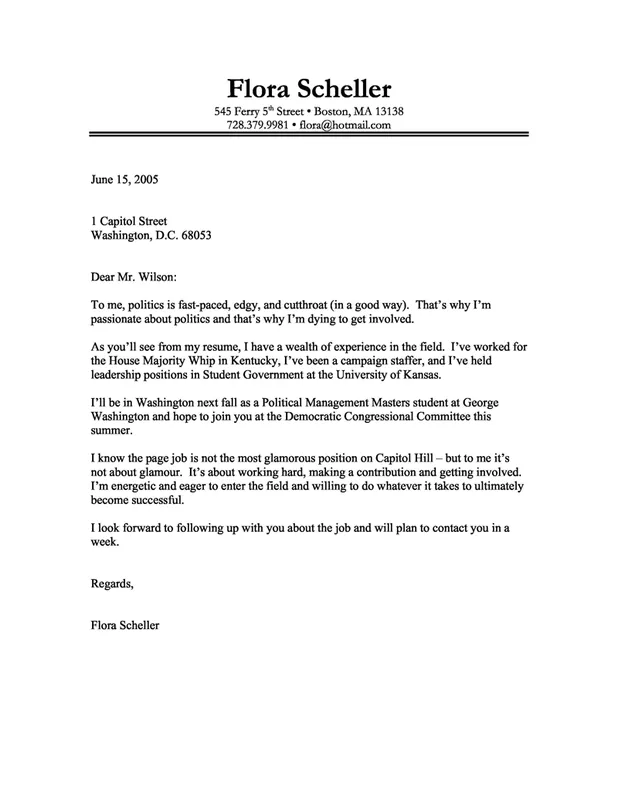
Understanding the key components of a cover letter is essential to creating an effective outline. A typical cover letter includes a header, a salutation, an introduction, body paragraphs, a closing, and a signature. Each section serves a specific purpose in conveying your qualifications and expressing your interest in the position. The header provides contact information; the salutation addresses the hiring manager; the introduction grabs their attention; the body highlights your skills and experience; the closing reiterates your interest; and the signature formalizes the letter. The precise content and emphasis of each section will vary depending on the job and your specific experiences.
Header Section Details
The header of your cover letter is crucial for providing essential contact information. It typically includes your full name, address, phone number, and email address. The header should be formatted professionally and consistently, matching the style of your resume. Ensure your contact details are up-to-date and easy to read. The header also often includes the date, which should reflect when you are sending the cover letter. Some templates also include the employer’s information in the header, like their name and address, although this is becoming less common.
Recipient’s Information Details
When possible, addressing your cover letter to a specific person shows you’ve done your research and adds a personal touch. If the hiring manager’s name is available, use it. If not, use a general salutation like “Dear Hiring Manager” or “Dear [Company Name] Team”. Avoid generic greetings like “To Whom It May Concern.” Finding the right contact person can sometimes take a bit of effort—check the company website, LinkedIn, or even call the company. Using the correct name makes a positive first impression and indicates your attention to detail.
Opening Paragraph Tips
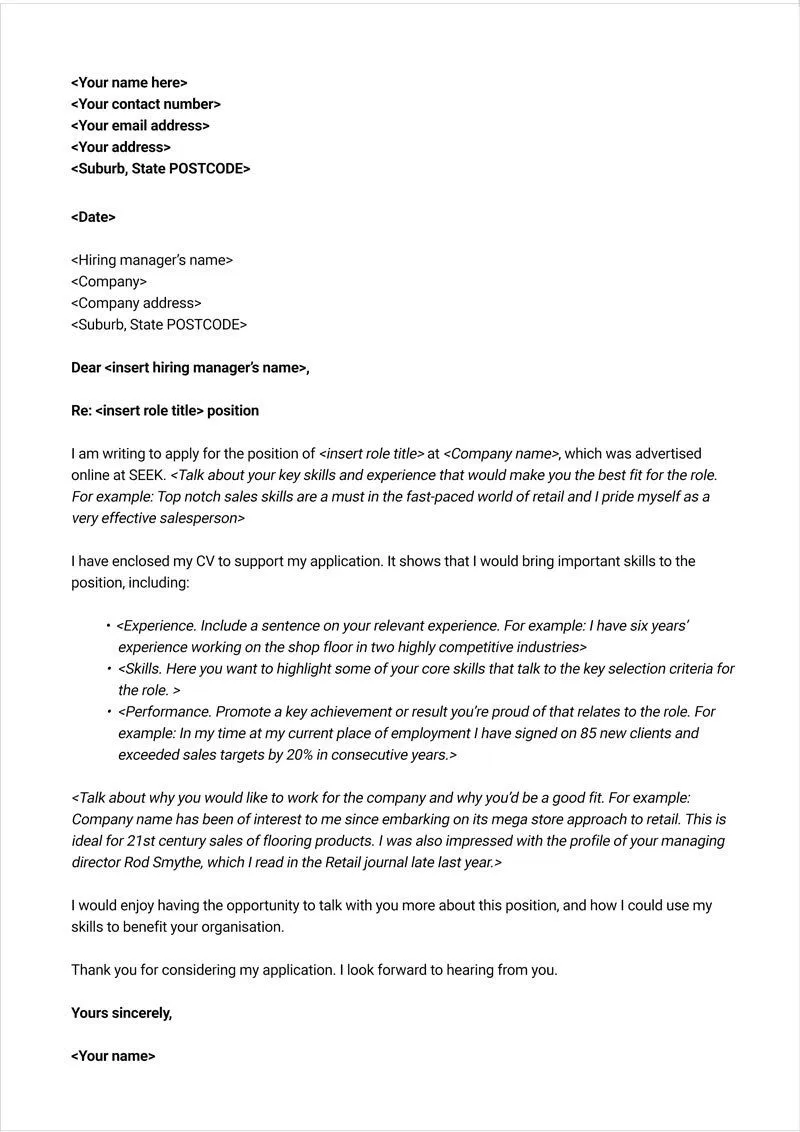
The opening paragraph is your chance to grab the reader’s attention. Start by stating the position you’re applying for and how you learned about it. Consider mentioning a mutual contact or something that sparked your interest in the company. Briefly highlight your most relevant qualifications or skills to pique their interest. Keep it concise and engaging. Avoid generic opening lines like “I am writing to apply for the position…” Instead, focus on making an immediate connection and showcasing your enthusiasm.
How to Grab Their Attention
To truly grab the reader’s attention, consider starting with a compelling hook. This could be a brief anecdote that demonstrates a relevant skill, a statement about your passion for the company’s mission, or a quick mention of a significant achievement. The goal is to immediately engage the reader and make them want to continue reading. Use strong action verbs, and focus on results. Tailor your opening to the specific job and company, demonstrating that you’ve done your homework.
Body Paragraph Examples
The body paragraphs are where you showcase your skills and experience in detail. Use each paragraph to address specific requirements mentioned in the job description. Provide concrete examples of your accomplishments, using the STAR method (Situation, Task, Action, Result) to illustrate how you’ve successfully handled challenges. Quantify your achievements whenever possible (e.g., “Increased sales by 15%”). Keep paragraphs focused and concise, ensuring that each one supports your overall narrative and demonstrates how you are a good fit for the role. Use keywords from the job description to help your application get noticed.
Highlighting Skills and Achievements
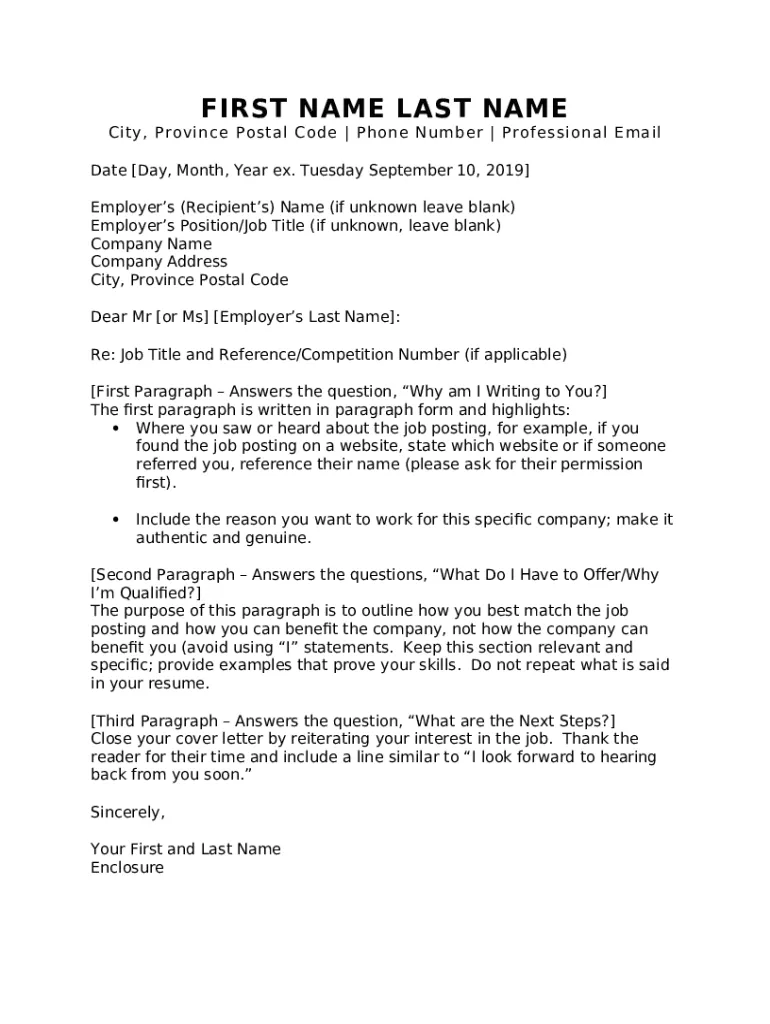
When highlighting your skills and achievements, be specific and provide evidence. Instead of simply stating that you have strong communication skills, describe a situation where you successfully communicated a complex idea to a diverse audience. When mentioning achievements, quantify them if possible. For example, instead of saying “Managed a team,” say “Managed a team of 10 employees, resulting in a 10% improvement in productivity.” Align your skills and achievements with the specific requirements of the job to demonstrate you understand the employer’s needs.
Tailoring to the Job Description
Tailoring your cover letter to the job description is crucial. Carefully review the job posting and identify the key requirements. Then, in your cover letter, address each requirement, explaining how your skills and experience align with them. Use the same keywords and phrases from the job description to signal your understanding of the role. This demonstrates that you’ve taken the time to understand the position and are a strong candidate. Make sure your letter is customized to the specific role; a generic letter will not impress the hiring manager.
Closing Paragraph Examples
The closing paragraph should summarize your interest and reiterate your qualifications. Express your enthusiasm for the opportunity and reiterate your belief that you are a good fit. Mention that you are available for an interview and thank the reader for their time and consideration. Keep it concise and professional. Avoid clichés and end with a strong statement that reinforces your interest and confidence in your ability to contribute to the company’s success.
Call to Action and Expression of Gratitude

Include a clear call to action, such as stating that you are available for an interview and eager to discuss how you can contribute. Express your gratitude to the hiring manager for their time and consideration. A simple “Thank you for your time” or “I appreciate your consideration” is sufficient. End with a professional closing, such as “Sincerely” or “Best regards,” followed by your name. This reinforces your professionalism and leaves a positive final impression.
Example Outline 1 The Standard Cover Letter
The standard cover letter is a versatile template that works well for many job applications. It follows a traditional structure, presenting your qualifications in a clear and concise manner. This outline is a great starting point for most applications and is easy to customize to fit your skills and the specific job requirements. The key is to present your information in a logical, easy-to-read format that highlights your relevant experience.
Header
Your name, address, phone number, email address, and the date should appear at the top, along with the recipient’s name and address if known. This information ensures the employer can contact you and adds a professional touch to the letter.
Introduction

State the position you are applying for and how you learned about it. Briefly mention why you are interested in the role and the company. This introduction sets the tone for the rest of your letter and captures the hiring manager’s attention from the beginning.
Body Paragraph 1
Highlight your most relevant skills and experiences. Provide specific examples of how your qualifications match the job requirements. Use the STAR method (Situation, Task, Action, Result) to demonstrate your accomplishments.
Body Paragraph 2
Expand on additional skills or experiences that align with the job description. Show how your background makes you a strong fit for the company culture and position. Make sure to use keywords from the job description to show the hiring manager that you understand what the company is looking for in an applicant.
Closing
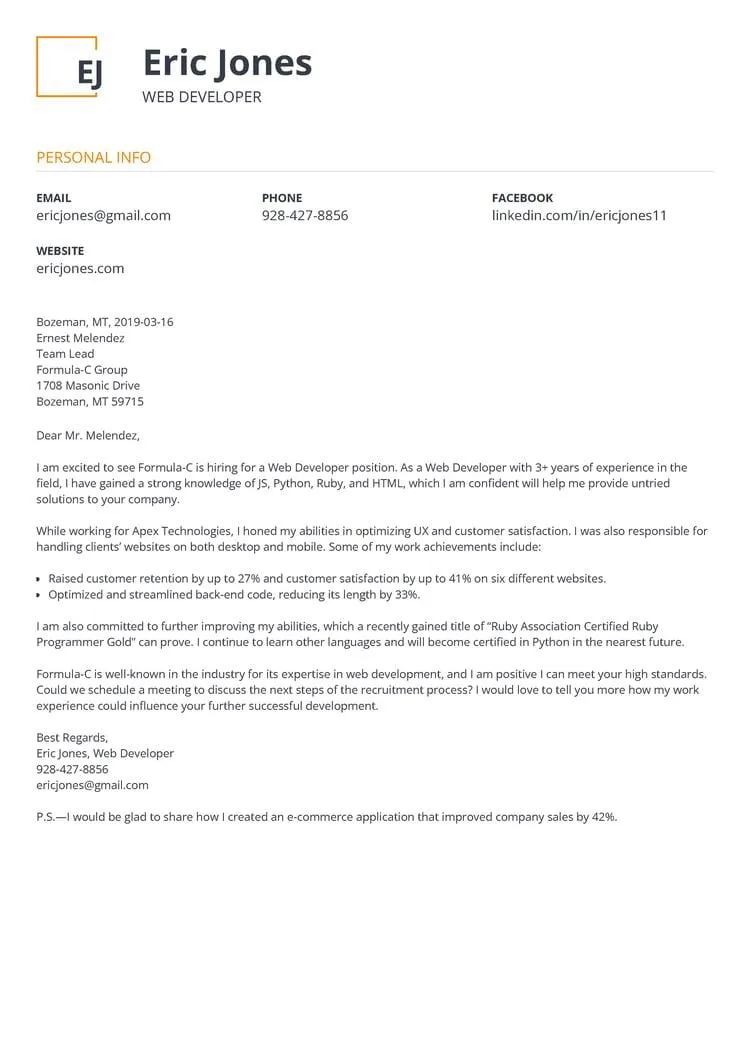
Reiterate your interest in the position, thank the hiring manager for their time, and include a call to action (e.g., “I look forward to hearing from you.”). Include a professional closing and your signature.
Example Outline 2 The Skills-Based Cover Letter
A skills-based cover letter emphasizes your abilities rather than your chronological work history. This is useful if you have gaps in your employment, are changing careers, or have transferable skills. The outline is structured to highlight the skills that match the job description, making it easy for the employer to see how you can contribute.
Header
Include your contact information, the date, and the recipient’s details.
Introduction
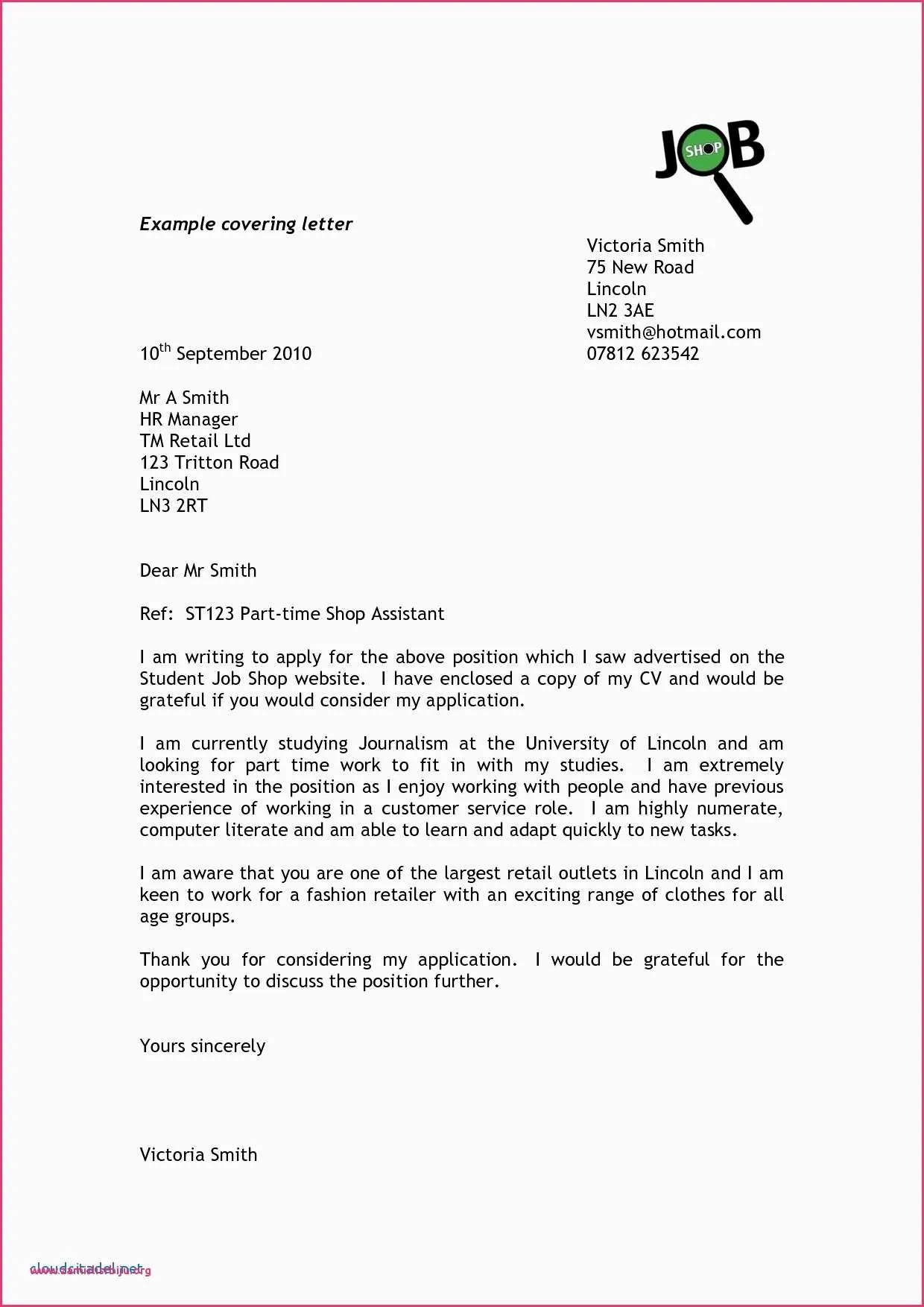
Mention the position, where you saw it, and a brief overview of your key skills. Capture the hiring manager’s attention by immediately highlighting your relevant expertise.
Skill 1 and Supporting Evidence
Describe one key skill from the job description. Provide a specific example of how you have used this skill and the positive results you achieved. Use the STAR method to describe the situation, your task, your action, and the result.
Skill 2 and Supporting Evidence
Describe another key skill, providing a detailed example of its use and the outcome. Use quantifiable results to show your achievements.
Closing
Reiterate your interest, thank the reader, and include a call to action.
Example Outline 3 The Narrative Cover Letter
The narrative cover letter uses storytelling to connect with the hiring manager. It’s great for showcasing your personality and providing context to your accomplishments. This approach creates a more personal connection and can help you stand out from other applicants by demonstrating your ability to engage the audience and use storytelling in your writing.
Header
Include your contact information and the date, plus the recipient’s details.
Introduction
Grab the reader’s attention with a brief story or anecdote that showcases your passion or a relevant skill. Create immediate engagement by drawing the reader into your narrative.
Story 1
Share a story that demonstrates a key skill or experience. Detail the situation, your actions, and the positive results. Focus on showcasing how your actions generated a positive outcome.
Story 2
Provide another story to further illustrate your capabilities and how you can add value to the company. Emphasize results and tailor the stories to match the company’s goals and values.
Closing
Reiterate your interest and include a call to action, thanking the hiring manager.
Example Outline 4 The Targeted Cover Letter
A targeted cover letter is ideal for showcasing how your skills and values specifically align with the company’s needs. This is useful when applying to a company with a clear mission or a specific work culture. Its structure highlights your understanding of the company’s goals, making you a strong contender. This outline helps you tailor your application to the specific requirements and culture of the company you are applying for.
Header
Include the usual contact details and recipient information.
Introduction
Mention the position, company, and your immediate interest. Explain why the company’s mission or values resonate with you.
Highlighting Alignment with Company Values
Explain how your personal values align with the company’s mission and culture. Give specific examples of how you have demonstrated these values in the past. Ensure that you align your experience with the company’s goals.
Showcasing Specific Skills
Demonstrate how your skills and experience align with the specific requirements of the job and the company’s needs. Provide evidence of how you’ve used these skills to create successful outcomes.
Closing
Reiterate your interest and thank the hiring manager for their time. Mention your enthusiasm for the opportunity and reiterate your belief that you’re a good fit.
Example Outline 5 The Combination Cover Letter
The combination cover letter blends the elements of the skills-based and the chronological approaches. It highlights both your skills and your work history, providing a comprehensive view of your qualifications. This letter format is a good option for those with diverse experience and skills.
Header
Include your contact information, the date, and recipient information.
Introduction
State the position and your key qualifications. Briefly mention your career goals and express your enthusiasm for the role.
Skills and Experience
Highlight 2-3 of your most relevant skills, providing brief examples of how you’ve used them to achieve success in previous roles. Integrate specific achievements, and mention the results.
Achievements and Contributions
Briefly summarize your relevant work experience, emphasizing key achievements and contributions. Mention your roles and the outcomes of your work. Showcase how you provided value in previous companies.
Closing
Reiterate your interest, thank the hiring manager, and include a call to action.
Tips for Customizing Your Outline
Once you have selected a cover letter outline, it’s time to customize it. You will need to tailor the outline to your specific skills, experiences, and the requirements of each job. This ensures your letter is relevant and increases its impact. Customization requires adapting the chosen outline and its components to your particular situation.
Research the Company and Job
Before you start writing, research the company and the specific job. Understand the company’s mission, values, and culture. Analyze the job description and identify the key requirements and keywords. This information will help you tailor your outline to the company’s needs and show you understand what the employer is looking for. Using company-specific keywords and phrases will greatly boost your chances of being noticed.
Match Skills to Requirements
Carefully compare your skills and experiences with the job requirements. Identify the skills and experiences that align most closely with the job description. When customizing your outline, highlight those skills and provide specific examples of how you’ve demonstrated them. Use keywords from the job description to strengthen your application and showcase your relevant background.
Proofread and Edit Carefully
Proofreading and editing your cover letter is extremely important. Before submitting your application, carefully review your cover letter for any errors in grammar, spelling, or punctuation. Ensure that your language is clear, concise, and professional. Ask a friend or colleague to review your letter for a second opinion to catch any mistakes you might have missed. A polished cover letter shows your attention to detail.
Additional Resources for Cover Letter Writing
There are many resources available to help you write effective cover letters. You can find online templates, articles, and guides that provide examples and best practices. Career websites and job boards often have cover letter writing tips and templates. Consider seeking advice from a career counselor. Use these resources to improve your cover letter-writing skills.
